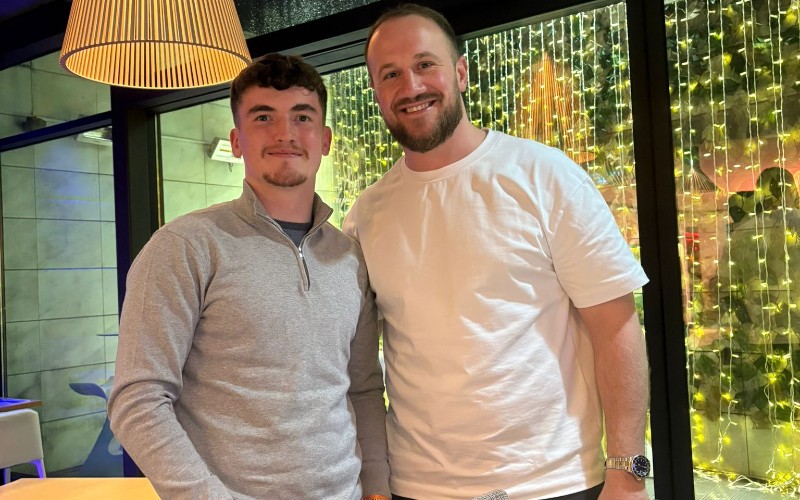When Red Flag Alert announced a £4m Series A+ investment in January, CEO Richard West was clear about his ambition: to reach £10m in ARR by the end of 2026.
Ten months on, that target remains on track, but the route to get there looks very different.
“So we’re still on track for £10m ARR by the end of 2026,” West tells BusinessCloud in Lisbon.
“But I think what’s changed in the last 12 months is the strategy. Last year, we did a lot of deep soul searching and analysis of performance.
“Following that, we looked at how we could get to where we want to get to quicker, with more efficiency and be more profitable.”
@businesscloud.co.ukIt’s Web Summit Day Two! Lots of big moves for the boys in blue today, as BusinessCloud embarks on day two of the flagship event Highlights included interviews with Sarah Franklin and Arvind Jain, the KPMG Global Tech Innovator Final and insight into a 15-year-old tech star #WebSummit #tech #uktech #business
The Manchester-based business intelligence platform, which provides real-time data on more than 15m UK companies, has grown rapidly since Foresight Group’s initial £3.5m investment.
By the beginning of this year, it had tripled its client base from 200 to 600 since Foresight’s backing 18 months earlier in 2023.
The firm had also nearly tripled ARR to £5.2m and expanded its team from 20 to 51.
However, West says the business reached a point where growth alone wasn’t enough.
Focused expansion
“The biggest challenge most businesses have is that you’re trying to grow quickly,” he says.
“There is a phrase called ‘growth at all costs’ – you just keep landing customers and servicing them.
“But not all of those customers are good customers and not all of them are the right fit for your technology.”
After analysing the data, West and his team made what he calls ‘some really tough decisions’.
He continues: “Traditionally, we worked with small and medium-sized companies, lower end of the medium size, with a handful of large customers.
“We made the bold decision to go all in on medium and large-size customers.
“We’ll still work with small businesses if they come to us organically, but not spend a lot of time marketing to them.”
That shift has upended the company’s go-to-market strategy, which in January was still geared toward a wide customer base across five key sectors – financial services, accounting, legal, construction/manufacturing and business utilities.
Now, Red Flag Alert has gone from driving traffic and inbound leads to targeted account-based marketing, focusing its efforts entirely on pre-identified prospects.
West adds: “We’ve already found the businesses we want to work with, and now we’re spending our money trying to get in front of them.
“All of the supporting metrics that help every organisation are improving.
“It’s been switching energy and tenacity for focus, and then being relentless and rigid through that line of path.
“For the first time in our history, we’re saying no to customers.”
That focus hasn’t slowed growth, it’s just changed how it looks.
“We onboarded about 150 customers last year,” he says.
“This year, we’ll probably grow just as much (income-wise) as a percentage – around 40 per cent – but we’ll do it with 40 customers.
“It’s about the 40 customers being the ones we want, rather than saying yes to 150.”
Rhinoflux wins KPMG Global Tech Innovator 2025 at Web Summit
‘Efficiency doesn’t mean cutting jobs’
When Red Flag Alert raised its Series A+ round, backed by Foresight Group and Begbies Traynor founder Ric Traynor, West said the funding would support upgrading technology and onboarding bigger, more sophisticated clients.
That’s now in full swing. The company has rebranded to appeal to the mid-market and enterprise space, launched a new website and doubled down on efficiency, but not in the traditional sense.
“Most people think of efficiency as reducing headcount,” says West.
“But for us, efficiency is about changing the go-to-market strategy, focusing our technology spend and growing with the right customers.
“Our headcount’s the same. We’re using AI and systems to make our people more effective, putting them in the right place at the right time.
“We’ll still grow headcount, but strategically – we’ll be able to hire those with more expertise.”
Bananas to the moon
As is with almost every technology business worldwide, AI is being implemented at Red Flag Alert.
However, it is not being used for the sake of hopping onto a trend.
“Operationally, we use AI as an enabler,” West explains.
“Our sales and marketing team use AI agents that listen to meetings, transcribe them and write summaries that can be emailed to customers.
“It saves time, removes admin, and makes our team more effective.
“We embarked on a project about 18 months ago to modernise the way we ingest data.
“We’re fully native in the cloud, we’ve deployed Databricks as our architecture and that’s going to enable us to put AI into our database to create more predictive models for our customers.
“Our vision is to use AI in a way in our sector that’s never been used before – actually in the data.
“None of our competitors can use AI in their deep data. They can only use it in the front end.
“We want to use it to create predictive outcomes – to model what might happen next for a business and how that affects its trajectory.
“We’ve just moved 20 billion pieces of data into a new environment.
“If you stacked bananas end-to-end, you could get to the moon – that’s how much data we’re talking about.”
ASCEND
Red Flag Alert is part of GM Business Growth Hub’s ASCEND accelerator programme, which has entered its second year.
Despite the company’s growing global footprint West says this trip to Web Summit in Lisbon with the rest of the cohort has been invaluable.
“It’s probably the only opportunity I’ve had in three years to spend time away from the business thinking about the business,” he says.
“Listening to where the world’s going – even if it doesn’t impact me directly – helps me understand where our customers’ worlds are going.
“I also met a really interesting Spanish company working in data visualisation.
“Their product does the same as one I’ve looked at, but at half the cost.
“I’d never have found them if I hadn’t walked around this event.”
Future plans
With a leaner strategy, sharper technology roadmap and a stronger focus on enterprise, West says 2026 will be a defining year.
He says: “There’s going to be a lot of consolidation in our market. A lack of investment will lead to even more consolidation.
“I think 2026 is going to be a really, really interesting year for our business.
“It’d be nice to get the company to a size where I can say I’ve had enough,” he says.
“If I’ve had enough, it means the company’s outgrown me and I’m not adding value – and that would be great.
“I want to create some financial freedom for me and my family and I want the people who’ve been on this journey with me to have that same experience with their families.
“For our investors, it’s about delivering maximum value – being able to say someone gave us £1 and we gave them £3 back.
“That reputation – if you give Richard a quid, he’ll make you three – that’s the legacy I want.
“But I love being in a crisis. I love something happening and going, ‘what do we do now?’
“The sooner you can deal with things, the more effective you are.”
“I’m enjoying the ride. We’ve started executing our new strategy, and I want to reap the rewards of that – then see what the next three years bring.
“I can’t wait for January already – I’m counting down the days!”


